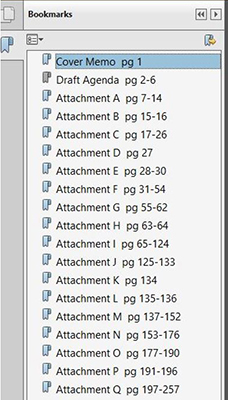
June 1, 2016 – Electronic filing of briefs and other court documents. If you haven't done it yet, you'll be doing it soon, over and over again now that Wisconsin circuit courts will begin rolling out mandatory electronic filing in phases beginning July 1, 2016.
If all runs according to plan, electronic filing will be in place and required in civil, family, paternity and small claims cases by the end of 2017, and in all Wisconsin circuit courts by 2019. Counties with voluntarily filing already will be the first to go mandatory.
The Wisconsin Supreme Court and Court of Appeals have required electronic brief filings for years.1 And the federal judiciary’s Seventh Circuit, which covers Wisconsin, expanded electronic filings beyond briefs to virtually all nonprivileged documents.2
Each circuit court will likely devise its own formatting rules for electronically filed briefs, but they may not differ from the already existing brief formatting rules because attorneys are merely submitting briefs in Portable Document Format (PDF).
E-filing will likely induce more judges to read briefs and other court documents on computer screens, tablets, and even mobile devices. Attorneys should understand how “screen reading” may impact the persuasiveness of the information presented.
The Eye Moves Differently Over a Screen
A number of substantive articles on the differences between reading a legal document on a screen and in print are out there, and more will surely follow. The points stated in this article derive from four such articles.3
 Diane Slomowitz (U.W. 1980) is a shareholder at Fox, O’Neill & Shannon S.C., Milwaukee. She concentrates her practice on appellate briefing, legal research, and legal writing for the firm’s business and individual clients. Reach her by email or by phone at (414) 273-3939.
Diane Slomowitz (U.W. 1980) is a shareholder at Fox, O’Neill & Shannon S.C., Milwaukee. She concentrates her practice on appellate briefing, legal research, and legal writing for the firm’s business and individual clients. Reach her by email or by phone at (414) 273-3939.
It is generally accepted that the eye reads a paper document continuously and linearly. One reading a printed brief can flip through it, note its pagination, go from page to page or argument to argument, and find the “way back” through the table of contents.
The eye reads a screen document much differently. Despite “pagination,” an electronic brief is one long page. Screen readers follow on an F-shaped pattern, which means that they focus on the top and left side of a screen. They likely seek headings and summaries, read the first paragraph the most closely, and read a paragraph’s first sentence but skim the rest.
Screen reading may also occur more slowly than paper reading. Readers may “make up” such time by skimming, rather than in-depth reading. This is particularly important for judges with a “stack” of cases to resolve.
Words May Not Always Be Enough
Even in a printed brief, no one wants to see a page full of black ink. Spacing, paragraphs, white space and fonts are effective at breaking the monotony.
Images, which are occasionally incorporated into printed briefs, can be extremely effective if appropriately used in electronic briefs. Want the judges to empathize with the severity of damage to your client’s building? Insert a picture. Want them to understand the depth of your client’s losses from an opponent’s continuing infringement? Include a graph of lost sales during the limitations period.
Graphics can help make the complex understandable and the esoteric facts relatable. Pictures or charts that do not advance your material argument, or highlight insubstantial aspects of your case, can do more harm than good. Similarly, too many images can become a distraction, so use them appropriately and with care.4
Learn More
The June Wisconsin Lawyer (forthcoming) contains a feature article that will give you all the information you need on mandatory e-filing in Wisconsin. Go to Wisconsin Lawyer online in the coming days, or check it out in when the print magazine hits your mailbox.
Word Counts More Flexible
The Wisconsin Supreme Court and Courts of Appeals have their own formatting rules, under Wis. Stat. Chapter 809 (Rules of Appellate Procedure). For instance, briefs must be produced using either “a monospaced or a proportional serif font.”5
Filing briefs using a proportional serif font,6 such as Times New Roman, provides more flexibility because briefs in that font are capped by number of words, whereas briefs filed in monospaced font,7 such as Courier New, are capped by page number.
By allowing a word-count option, Wisconsin is ahead of the curve. Recently, the Illinois Supreme Court changed its rules to allow briefs capped by word count.
Jonathan Amarilio, writing for the Chicago Bar Association, said shifting from page limits to word limits recognizes that “[c]ontent displayed in the traditional pattern on a screen is absorbed less thoroughly and more impatiently than it is on paper.”8
He said the rule gives Illinois lawyers more options to use easier-to-read fonts and use “white space” through strategic placement of headings, subheadings, vital information, charts, graphs, and pictures, “which can be worth a thousand words.”
Some older-school judges may prefer reading briefs in paper format, regardless of their electronic availability. But many judges will likely move in the direction of reading electronic PDF filings on their iPad (or smartphones), if they are not already.
And since most judges use computers, they may be reading briefs, affidavits, and/or exhibits on computer screens during a case's hearing or oral argument.
As mandatory e-filing is implemented, what does it mean for the brief writer? Is a printed brief's impact the same as an e-brief? What, if any, adaptations should be made for this electronic age? And is it helpful to understand the format in which a particular judge is reading your filed brief? How, exactly, are you reading this article?
Guide the Reader
A prime benefit of electronic filing for judges is their ability to read a screen (laptop, tablet, phone) outside of chambers – at home, on vacation, or at a conference.
A downside for the untethered reader, however, may be the new or additional distractions in the “working” environment. And the electronic forum can itself be distracting. Emails, instant messenger notices, calendar reminders – these and other distractions may reduce the reader’s concentration and so his or her understanding.
These distractions, coupled with the discontinuous and often confusing nature of screen reading, make it critical for a brief writer to provide the reader with an easy to follow map within the brief itself. The following are some commonly recommended ways to help guide the reader through an electronic brief.
Some, such as the use of headings and strong paragraphs, apply to any brief; others, particularly hyperlinks and bookmarks, are specifically directed towards electronic filings. Most rules require electronic briefs to be filed in searchable PDF, which allows for the creation of hyperlinks and bookmarks.
Use navigational hyperlinks. These hyperlinks, once clicked, take the reader to another location within the brief (for example, to the table of contents, from the table of authorities to a discussion of a listed case, or to an attached exhibit or attached appendix). This lets the reader zero in on a particular or related fact, statement, discussion or argument.
Use associative hyperlinks. These hyperlinks, once clicked, take the reader to an outside source, an external website.9
Use bookmarks. Bookmarks are navigation tools that allow the reader to move to any part of a PDF document (see Figure A: Bookmarks). They don’t appear within the document itself, but on one side of the screen (commonly the left, which associates with the screen reader’s F-shape focus). A bookmark stays on the screen even when the brief itself is scrolled up or down. A bookmark is akin to a table of contents/statement of the issues that serves as the reader’s anchor when reading a screen brief.
Use easy-to-follow headings. Read from beginning to end, they should concisely summarize your argument.
Use shorter paragraphs, with strong topic sentences. This avoids big blocks of print, and catches the “skimmers,” and those who only read a paragraph’s first sentence.
Put the most important matter early in your brief. Since screens continuously scroll, they may seem endless to a tired reader, who may stop reading midway through and skip to the conclusion.
Avoid footnotes, unless they are hyperlinked from text to footnote. Otherwise, the reader may “get lost,” even with a table of contents.
Most of these technical recommendations should be reasonably easy to learn. While my assistant’s genius saves me from most filings, I am told that an hour with a computer teacher should do the trick.
Section XXIII of the Seventh Circuit’s Practitioner’s Handbook for Appeals contains typological recommendations which, while not specific to electronic briefs, remain generally helpful.
Figure A: Bookmarks

Conclusion: Good Writing Remains Good Writing
Good attorneys adapt to changing laws, changing procedures and changing practice methods. Electronic filing is just one more change (more will inevitably follow). Brief writers, and their briefs, will adapt to its intricacies and impacts.
Bookmarks, hyperlinks, charts, and pictures – these bells and whistles, appropriately used, can help a screen reader grasp a brief’s arguments with greater clarity. However, they cannot hide an ill-conceived argument or an inapposite case or statute. They are tools of persuasion, not goals unto themselves.
Whether on screen or paper, a winning brief is a well-written one. Organized, concise, accurate and civil briefs are persuasive whatever the medium. Good briefs persuasively tell an unfinished story. Through facts, law, and analysis, they guide the reader to write the story’s last chapter in the client’s favor.
Endnotes
1 See Wis. Stat. §§ 809.19(8) (Court of Appeals), 809.62(4) (Supreme Court).
2 Seventh Cir. Court Rule 25 (Electronic Filing).
3 R. Lainie Wilson Harris, Ready or Not Here We E-come: Remaining Persuasive Amidst the Shift Towards Electronic Filing, 12 Legal Comm. & Rhetoric: JALWd 83 (Fall 2015); Ellie Margolis, Is the Medium the Message?: Unleashing the Power of E-Communication in the Twenty-First Century, 12 Legal Comm. & Rhetoric: JALWD 1 (Fall 2015); Ellie Neiberger, Judge-friendly Briefs in the Electronic Age, 89-FEB Fla. B.J. 46 (2015); and K.K. DuVivier, E-Filing: Entering the Electronic Age – Part 1, 32-SEP Colo. Law. 69 (2003).
4 One proviso. Currently, Westlaw and LexisNexis do not print images. So, if the reader prints an electronic brief, instead of the image, the page will state something like “TABULAR OR GRAPHIC MATERIAL SET FORTH AT THIS POINT IS NOT DISPLAYABLE.” Ironically, this happened in printing an article urging the cautious use of images in written legal argument. See Porter, Elizabeth, Taking Images Seriously, 114 Colum. L. Rev. 1687.
5 See Wis. Stat. § 809.19(8)(c); § 809.24(1); § 809.50(1)-(2); § 809.51(1)-(2); § 809.62(4)(a); § 809.81(3).
6 Proportional font means “a font in which the horizontal space used by a character varies. Wis. Stat. § 809.01(5g); Serif Font means “a font that has short ornaments or bars at the upper and lower ends of the main strokes of the characters.” § 809.01(8).
7 Monospaced font means “a font in which each character uses an equal amount of horizontal space.” § 809.01(5d).
8 Chicago Bar Association, The Record, Why One Seemingly Minor Change Will transform the Way We Write (January 2016).
9 For example, http://www.foslaw.com/attorneys/diane-slomowitz/.
